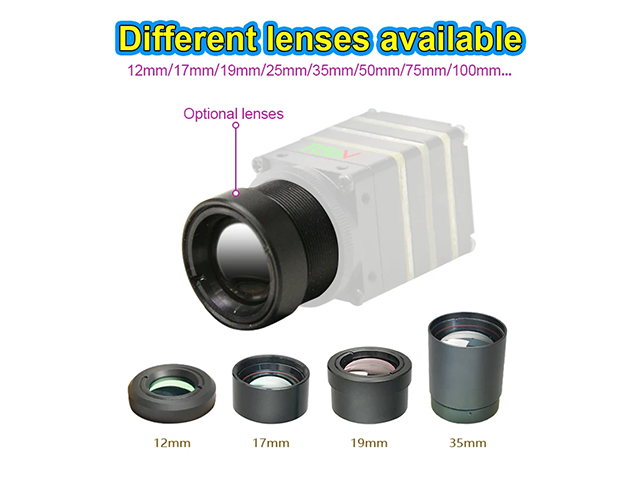RSNV BRI-SM567 Mini Thermal Imaging Module without Shutter
Sales Engineer: Grace Gao
RSNV BRI-SM567 Thermal Imaging Module without Shutter is a component in thermal imaging systems that operates without the need for a mechanical shutter.
-
Basic Function: It is designed to detect infrared radiation emitted by objects and convert it into an electrical signal or a visual image that can be interpreted by users. By sensing the heat differences in the environment, it enables the visualization of objects and scenes even in low-light or no-light conditions, as well as through obstacles like fog or smoke to some extent.
-
Operation without Shutter: Unlike traditional thermal imaging modules that often use a shutter for calibration and to improve image quality by periodically blocking the infrared radiation to measure the background noise and offset, a thermal imaging module without a shutter employs alternative techniques. It might use software-based calibration algorithms or other innovative hardware designs to achieve similar noise reduction and image stabilization effects. This allows for a more simplified and potentially more reliable operation, as it eliminates the need for a mechanical component that could potentially fail or require maintenance.
Product Feature
1)BRI-SM567-3/6 Gen2 thermal module is the smallest thermal imaging module in the world;
2)BRI-SM567-3/6 adopts the latest Gen2 384x288px/640*480@17umFPA uncooled detector;
3)BRI-SM567-3/6 can provide clearer picture and customized connection interface, they will bring great success to your system integration;

|
Item
|
BRI-SM567-3
|
BRI-SM567-6
|
|
Detector Performance
|
|
Type
|
Uncooled Asi FPA Detector
|
|
FPA Formal/ Pixel Pitch
|
384*288px@17μm|
|
640*480p×@17μm
|
|
Sentivity
|
NETD<30mk@f/1.0300k
|
|
Frame Rate
|
50Hz
|
|
Spectral Range
|
8~14μm
|
|
Image Processing
|
|
Non-unifromity Correction
|
Self-adaption Calibration
|
|
Time to Image
|
<3s
|
|
Image Enhancement
|
DDE
|
|
Image Display Resolution
|
640*480px
|
|
Frame Rate
|
50Hz
|
|
Lens
|
Optical 12mm, 19mm, 35 mm,40 mm, 50 mm, 75 mm, 100 mm
|
|
Dispaly Control
|
|
Modes
|
White hot; Black hot; (Optical colorful)
|
|
Image Zoom
|
x2, x4 digital zoom
|
|
Brightness
|
Auto/Manual
|
|
Contrast
|
Auto/Manual
|
|
Image Reversal
|
Horizontal/Vertical
|
|
Crosshair
|
One or more
|
|
Analogue Video
|
Yes
|
|
Power
|
|
Operation Voltage range
|
DC: +2.5V~+5.5V
|
|
Typical
|
DC:3.7V
|
|
Power consumption
|
<0.9W
|
|
Reverse protection
|
Yes
|
|
Over/under voltage protection
|
Yes
|
|
Environment Parameters
|
|
Operation Temperature Range
|
Commercial: -20C~+60℃;Special Purpose:-40C~+60℃
|
|
Storage Temperature Range
|
-45C~+65℃
|
|
Humidity
|
5%~95% non-condensing
|
|
Anti-vibration and Shock
|
GJB 150-16 2.3.1; GJB 150-18 T7 100g/6ms
|
|
Temperature Shock
|
-5C/min(-40C~+60℃)
|
|
Physical Attributes
|
|
Weight (excludes lens)
|
12g
|
33g
|
|
Module Size
|
20*20 mm (only PCB)
|
24*24 mm (only PCB)
|
|
External Power Supply
|
Yes
|
|
Keyboard
|
Yes
|
|
Digital Video Output
|
14 Bit (50Hz) / BT.656 (customized)
|
|
Communication
|
RS232 or RS485
|
-
Applications: It has a wide range of applications in various fields. In the military, it can be used for night surveillance, target detection, and navigation. In the security industry, it helps in monitoring premises and detecting intruders. In the field of firefighting, it can assist firefighters in locating people and hotspots in smoke-filled environments. It is also used in industrial inspections to detect heat leaks in equipment and buildings, and in automotive applications for night vision and pedestrian detection systems.
-
Advantages: The absence of a shutter can lead to several advantages. It reduces the complexity and cost of the thermal imaging system. It also enables faster frame rates and more continuous operation, as there is no interruption caused by the shutter's movement. Additionally, it can make the module more compact and lightweight, which is beneficial for applications where space and weight are critical factors, such as in unmanned aerial vehicles (UAVs) or portable thermal imaging devices.
-
Challenges: However, developing and using a thermal imaging module without a shutter also poses some challenges. The calibration and noise reduction techniques need to be highly sophisticated to achieve image quality comparable to that of systems with shutters. There is a need to continuously improve the algorithms and hardware design to overcome the limitations of not having a physical shutter for calibration, especially in changing environmental conditions.
Sales Engineer: Grace Gao
Email: grace@bri-elec.com
WhatsApp: +86 199 2997 5286
Request A quick Quote(WhatsApp/wechat:+86-19929975286)

